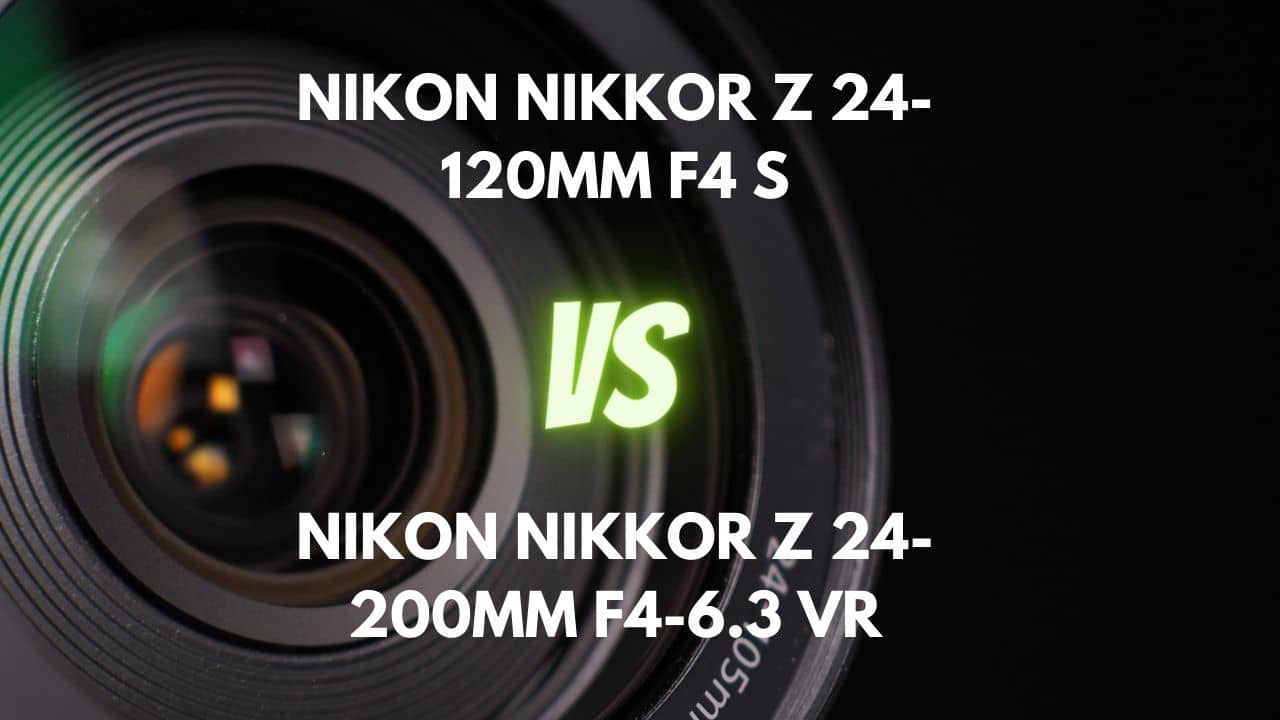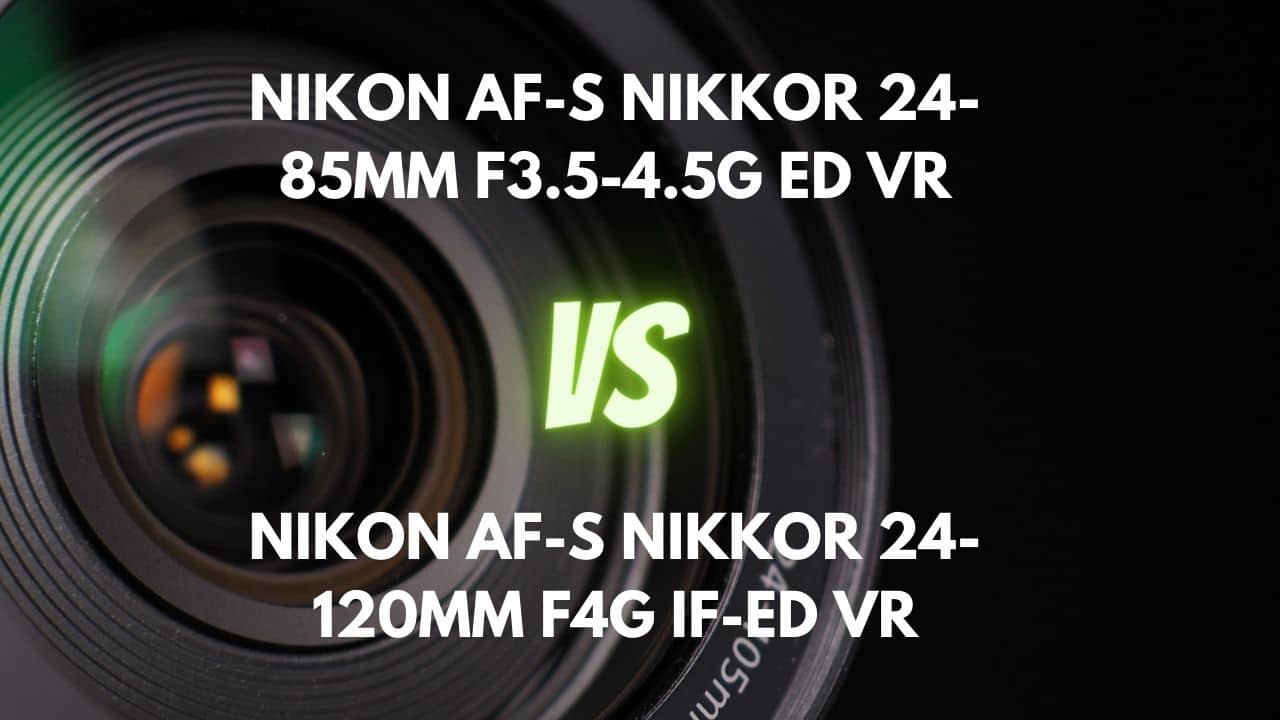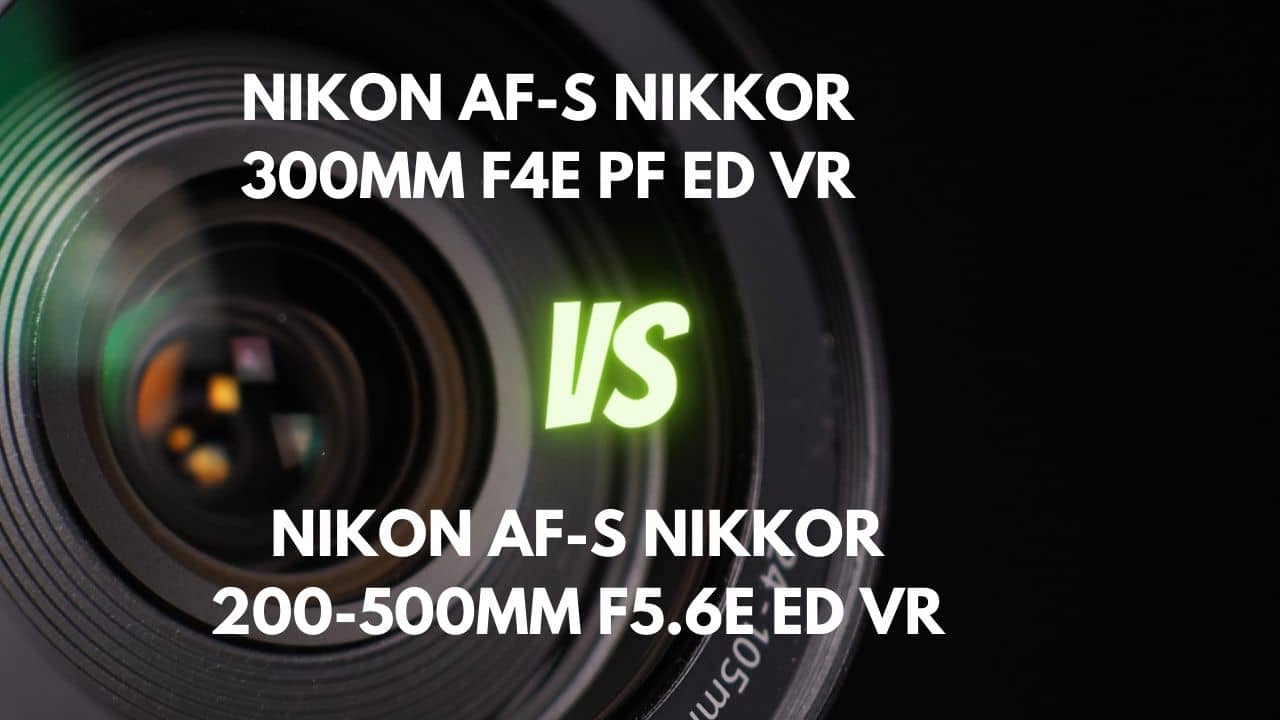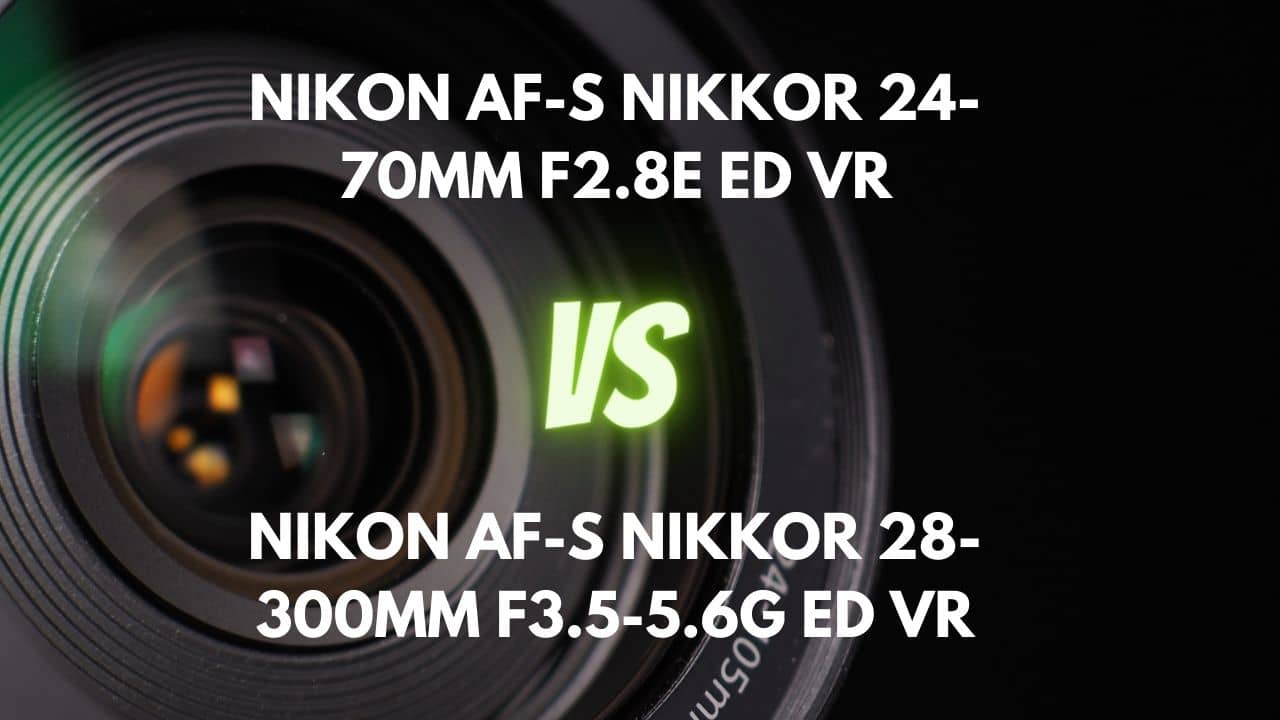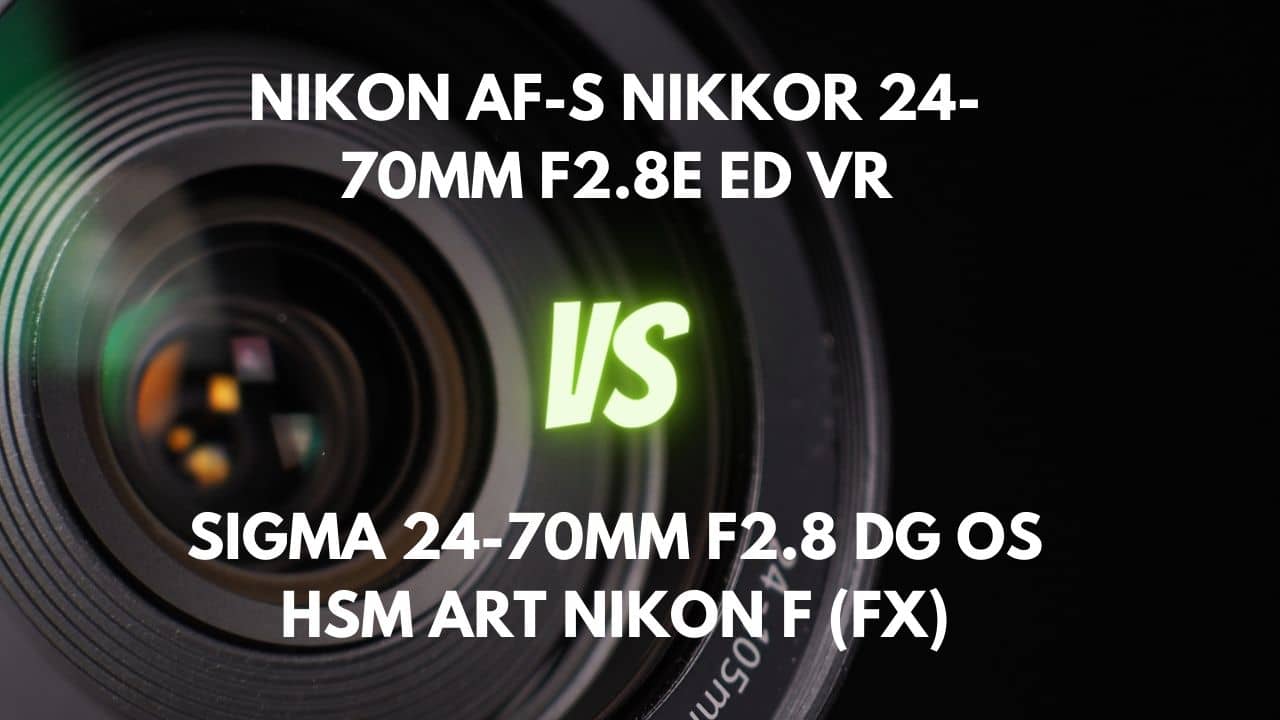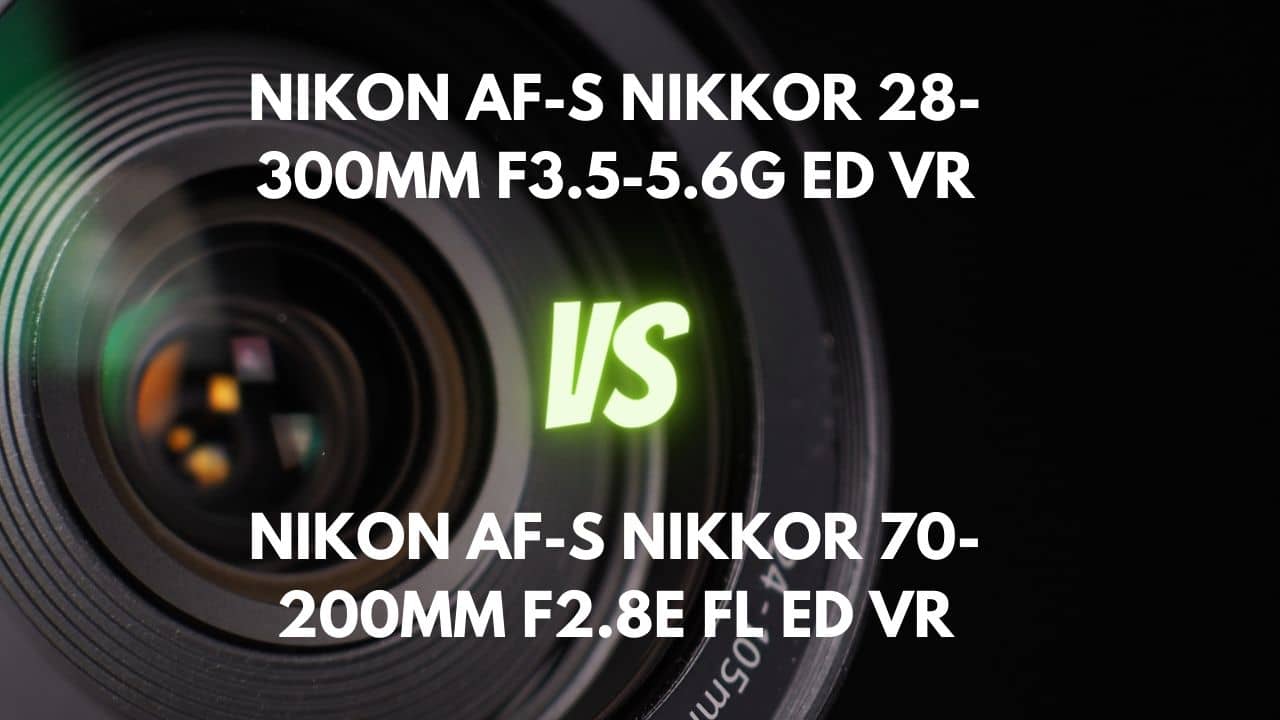Are you a photography enthusiast seeking the perfect lens for capturing everything from intimate street scenes to majestic landscapes and captivating portraits?
Then buckle up, as we dive deep into an insightful comparison of two versatile Nikon lenses: the 24-120mm f/4 and the 28-300mm f/3.5-5.6. These popular zoom lenses cater to a wide range of photography styles, offering the flexibility to adapt to various shooting scenarios without the need for constant lens swapping.
In this comprehensive article, we will explore the key factors that set these lenses apart, from image quality and focusing performance to build and bokeh.
Our in-depth analysis will help you determine which lens is the ideal companion for your photography adventures, whether you’re an ambitious hobbyist or a seasoned professional.
So, get ready to uncover the hidden potential of these two Nikon gems and empower your creative vision like never before!
Overview
| Nikon AF-S NIKKOR 24-120mm F4G IF-ED VR | Nikon AF-S NIKKOR 28-300mm F3.5-5.6G ED VR | |
|---|---|---|
| Max Aperture | F4.0 | F3.5-5.6 |
| Aperture Type | Fixed | Variable |
| Focal Range (mm) | 24-120 | 28-300 |
| Max Format | 35mm FF | 35mm FF |
| Zoom Ratio (X) | 5 | 10.7 |
The Nikon 24-120mm f/4 has a fixed maximum aperture of f/4.0, while the Nikon 28-300mm f/3.5-5.6 has a variable aperture ranging from f/3.5 to f/5.6. With a focal range of 24-120mm, the 24-120mm lens is versatile and suitable for various photography genres, including landscape, street, and portrait photography. Its fixed aperture ensures consistent performance throughout the zoom range, better low light performance, and overall better image quality. However, it is likely to be more expensive than the 28-300mm lens.
On the other hand, the 28-300mm lens offers a broader focal range of 28-300mm, making it ideal for photographers who need a single lens for various situations, such as travel or event photography. Its variable aperture makes it more affordable than the 24-120mm lens, but it may struggle in low light situations and exhibit reduced image quality, particularly at longer focal lengths.
In conclusion, the 24-120mm lens is superior in terms of consistent performance, low light capabilities, and overall image quality. However, if you prioritize versatility and budget, the 28-300mm lens may be a more suitable option.
Design and Ease of Use
| Nikon AF-S NIKKOR 24-120mm F4G IF-ED VR | Nikon AF-S NIKKOR 28-300mm F3.5-5.6G ED VR | |
|---|---|---|
| Diameter x Length (mm) | ⌀84×103.5mm | ⌀83×114.5mm |
| Weight (gr) | 710 | 800 |
| Filter Thread (mm) | 77 | 77 |
| Weather Sealing | No | No |
| Zoom Method | Rotary (extending) | Rotary (extending) |
| Distance Scale | Yes | Yes |
| DoF Scale | No | No |
| Hood Supplied | Yes | Yes |
| Hood Code | HB-53 | HB-50 |
The Nikon 24-120mm f/4 has dimensions of ⌀84×103.5mm and weighs 710 grams, while the Nikon 28-300mm f/3.5-5.6 has dimensions of ⌀83×114.5mm and weighs 800 grams. Both lenses use the rotary (extending) zoom method.
In terms of portability, the 24-120mm lens is lighter and slightly more compact, making it easier to carry around and less tiring during extended use. The smaller size and lighter weight also contribute to a better balance with your camera setup, ensuring more comfortable handling. Additionally, the 24-120mm lens offers more discreetness in situations like street photography, where blending in is important.
However, both lenses utilize the extending rotary zoom method, which means that they change their physical size when zooming in or out. This can make them more cumbersome to handle and potentially more challenging to weather-seal. The extending design can also impact the camera’s balance during zooming, requiring more effort to maintain stability while shooting.
Taking all factors into account, the 24-120mm lens offers greater advantages in terms of portability, balance, and discreetness, making it the superior choice for photographers who prioritize these features. However, the 28-300mm lens provides a broader range of focal lengths, which might be more suitable for photographers who need the versatility of a larger zoom range.
Lens Mount and Barrel
The Nikon 24-120mm f/4 has a chromed brass lens mount, which offers durability and strength. It’s accompanied by a rubber dust and moisture gasket, although the lens is not fully weather-sealed. The lens barrel is primarily constructed of black polycarbonate, giving it a solid feel and well-finished design. As you zoom from 24mm to 120mm, the front of the lens extends from 10.4 cm to 15 cm, with a stable and well-built barrel that doesn’t wobble.
In contrast, the Nikon 28-300mm f/3.5-5.6 features a solid metal lens mount with a dull-chromed brass finish. It has a rubber seal for basic dust protection. The lens barrel is made of plastic and has a rubber covering on the zoom ring for improved tactile feedback. The lens experiences a significant physical size change when zooming, with a three-inch extension at 300mm.
In conclusion, the 24-120mm lens has a more robust lens mount and barrel construction, thanks to its chromed brass mount and polycarbonate barrel. Meanwhile, the 28-300mm lens offers basic dust protection and a more budget-friendly construction with its plastic barrel. However, considering the materials and construction quality, the 24-120mm lens appears to be superior overall.
Weather Sealing
The Nikon 24-120mm f/4 features a rubber gasket at the lens mount, which provides basic dust protection. However, there are no internal seals at the rings, switches, and front of the barrel, making the lens less resistant to moisture and environmental factors.
On the other hand, the Nikon 28-300mm f/3.5-5.6 isn’t explicitly claimed to be weatherproof, but it also has a rubber seal around the lens mount for basic dust protection. Similar to the 24-120mm lens, there are no internal seals at the rings, switches, and front of the barrel. Moreover, this lens lacks a fluorine coating on the front element, which could have provided additional protection against smudges and water.
In conclusion, neither the 24-120mm nor the 28-300mm lens is fully weather-sealed, with both offering only basic dust protection at the lens mount.
Rings
The Nikon 24-120mm f/4 features a 30mm wide zoom ring with a deeply ridged rubber grip, providing a comfortable and secure hold. It rotates through approximately a quarter turn to span the 24mm to 120mm focal length range. The focus ring, however, is made of plastic with a ribbed texture and does not rotate smoothly. There is noticeable play between external movement and internal focusing, making manual focusing imprecise. The lens has a windowed distance scale but lacks a depth-of-field indicator and extension lock switch on the zoom ring.
In contrast, the Nikon 28-300mm f/3.5-5.6 has a zoom ring positioned towards the front and a focus ring closer to the mount. The zoom ring is an inch wide, surfaced with raised ribs, and covered in tactile rubber. The ring is nicely cammed, requiring two fingers to move through its 90-degree turning radius. The focus ring is narrow and made of grippy plastic. Although it lacks a depth-of-field indicator, it does have a distance scale sheltered behind a window. The lens smoothly extends from 28mm to 300mm and includes a zoom lock switch at 28mm to prevent zoom creep.
In conclusion, the 24-120mm lens offers a better zoom ring design with a comfortable grip and easy rotation. However, its focus ring lacks the precision needed for accurate manual focusing. The 28-300mm lens provides a more balanced experience with both zoom and focus rings, and the inclusion of the zoom lock switch is a useful feature.
Switches/Buttons
The Nikon 24-120mm f/4 has three slider switches located between the focusing ring and the camera body, making them easily accessible for the user’s thumb while keeping a steady grip on the camera. The top switch controls focusing, with options for manual/autofocus (M/A) and manual focus (M). The M/A mode allows for manual focus override by simply grabbing the focus ring. The second switch controls the Vibration Reduction (VR) system to compensate for unintentional movement, while the bottom switch toggles between Normal and Active VR modes.
On the other hand, the Nikon 28-300mm f/3.5-5.6 also features three switches on its barrel for easy access and user-friendly operation. These switches control the Vibration Reduction system, toggle between manual and autofocus, and allow the user to enable or disable the vibration reduction feature while choosing between active and normal modes.
Both lenses offer similar functionality in terms of switches/buttons, with easy access and user-friendly designs that allow photographers to make adjustments without removing their hands from the camera. The main difference lies in the positioning of the switches on the lens barrel, but this distinction is relatively minor. In terms of switches/buttons, both lenses are on par with each other, providing a convenient and efficient user experience.
Filter Thread
The Nikon 24-120mm f/4 features a 77mm filter thread, which is a standard size for most professional lenses. Its filter thread is made of metal and remains stationary during focusing due to the internal focusing system, making it convenient for using polarizers and other filters. However, vignetting may occur in the corners when using thick filters at the shortest focal lengths, so using slim versions of polarizing filters is recommended to avoid this issue.
On the other hand, the Nikon 28-300mm f/3.5-5.6 also has a non-rotating 77mm filter thread, but it is made of plastic. This lens is compatible with other telephoto lenses and remains stationary during focusing, making it easy to use with filters such as polarizing and neutral density filters.
Both lenses have 77mm filter threads, which are widely compatible with various filters and offer a good balance of availability and cost. The main difference between the two is the material used for the filter threads: metal for the 24-120mm lens and plastic for the 28-300mm lens. Metal filter threads are generally more durable and long-lasting, while plastic filter threads are lighter and less expensive.
Although the metal filter thread of the 24-120mm lens may be considered superior in terms of durability, the choice ultimately depends on your specific requirements and preferences. If you value durability and robustness, the 24-120mm lens with its metal filter thread might be the better choice. However, if you prioritize a more affordable option, the 28-300mm lens with its plastic filter thread could be more suitable.
Lens Hood
The Nikon 24-120mm f/4 comes with a petal-shaped HB-53 hood, which has a ribbed inner surface to prevent light reflections and maintain image contrast. This hood is designed for wide-angle distances and can be reversed onto the lens for storage. The lens hood and lens cap are both plastic bayonet, and the hood adds an additional 4 cm to the length of the lens.
In contrast, the Nikon 28-300mm f/3.5-5.6 includes a plastic bayonet HB-50 hood, which is also petal-shaped and designed for better performance at wider angles. The hood can be smoothly rotated and is made of plastic with a matte finish on the interior.
Both lens hoods are included in their respective packages and share a petal-shaped design, providing protection and reducing flare. The main difference between the two is the interior surface: the 24-120mm lens hood has a ribbed inner surface, which is more effective at preventing light reflections and maintaining image contrast.
Considering the benefits of a ribbed inner surface, the 24-120mm lens hood with its HB-53 design can be considered superior to the 28-300mm lens hood with the HB-50 design. The ribbed surface of the 24-120mm lens hood offers better light reflection prevention, potentially leading to higher image quality. However, both lens hoods provide protection and serve their purpose, and the choice ultimately depends on your specific needs and preferences.
Focusing and Optical Stabilization
| Nikon AF-S NIKKOR 24-120mm F4G IF-ED VR | Nikon AF-S NIKKOR 28-300mm F3.5-5.6G ED VR | |
|---|---|---|
| Autofocus | Yes | Yes |
| AF Motor | Silent Wave Motor | Silent Wave Motor |
| Rotating Front Element | Does not rotate on focusing | Does not rotate on focusing |
| Min Focus Distance | 0.45m | 0.5m |
| Max Magnification (X) | 0.24 | 0.32 |
| Full-Time Manual Focus | Yes | Yes |
| Focus Method | Internal | Internal |
Focusing Performance
The Nikon 24-120mm f/4 boasts a Silent Wave Motor, offering quiet autofocus operation. Its focusing speed is fairly fast, taking approximately 0.8 seconds to go from infinity to 0.45m and 0.5 seconds from infinity to 0.85m. This lens is adept at accurately focusing in most situations, although it may struggle with fast-moving subjects.
Manual focus override is available at all times, even when set to autofocus. The internally focusing design maintains a constant length regardless of focus and zoom settings. However, the manual focus action is not as smooth due to some play in the coupling with the focus unit, which can cause challenges when trying to achieve critical focus. In low-light situations, this lens may exhibit some hunting and slower focusing.
On the other hand, the Nikon 28-300mm f/3.5-5.6 exhibits reasonable autofocus performance but may struggle with fast-moving subjects. Focusing speed is decent but not instant, taking around a second to go from infinity to 0.5m. The autofocus motor is not entirely silent but is generally unnoticeable. Autofocus accuracy is consistently reliable at all settings.
Manual focus override is available, and the action is smooth for precise adjustments. This lens also features an internally focusing design. Focus breathing is noticeable at 300mm but is not considered an optical defect. In low-light situations, focusing speed and accuracy may struggle, but the vibration reduction system can help compensate.
In summary, the 24-120mm lens offers superior focusing performance due to its quieter and faster autofocus operation. The manual focus override is also more easily accessible. However, the 28-300mm lens provides reliable autofocus accuracy and a smoother manual focus action.
Optical Stabilization
The Nikon 24-120mm f/4 is equipped with Vibration Reduction (VR) technology, offering up to 4 stops of camera shake compensation. This lens includes 2 modes of stabilization: Normal and Active. Normal mode compensates for quick and small vibrations, while Active mode handles a broader range of movements. The stabilizing effect can be observed through the viewfinder in both modes, and the lens operates quietly during autofocusing. The VR II system effectively allows for sharp images at slow shutter speeds, particularly useful for low-light photography.
In contrast, the Nikon 28-300mm f/3.5-5.6 features the same VR II technology, compensating for camera shake equivalent to a shutter speed increase of approximately 4 stops. It also has 2 modes of stabilization: Normal and Active. The stabilizing effect can be seen through the viewfinder in both modes as well. This lens enables sharp handheld images at slower shutter speeds, which can be as low as 1/13th of a second, depending on the focal length used.
In conclusion, both the 24-120mm and 28-300mm lenses offer similar optical stabilization performance with their VR II technology and dual stabilization modes. They both effectively compensate for camera shake, providing sharper images in various situations, particularly in low-light conditions.
Image Quality
| Nikon AF-S NIKKOR 24-120mm F4G IF-ED VR | Nikon AF-S NIKKOR 28-300mm F3.5-5.6G ED VR | |
|---|---|---|
| Special Elements | 2 ED glass elements, 3 aspherical lenses, Nano Crystal coat | 2 ED glass elements 3 aspherical elements |
| Diaphragm Blades | 9 | 9 |
| Circular Aperture | Yes | Yes |
Aberration
The Nikon 24-120mm f/4 displays noticeable lateral chromatic aberration, particularly in the 24-50mm range, which appears as purple or blue fringes along contrasty edges, especially in the corners. However, this chromatic aberration can be easily corrected in post-processing with software like Lightroom or Photoshop. The lens does not suffer from significant axial chromatic aberration, and it exhibits good sharpness, contrast, and color reproduction. Stopping down the aperture can help reduce chromatic aberration and improve overall image quality.
On the other hand, the Nikon 28-300mm f/3.5-5.6 presents chromatic aberration as blue-magenta fringing on high-contrast edges, mainly in the corners. However, it is generally well controlled due to the use of ED glass elements. Coma, or saggital coma flare, is not a significant issue with this lens, while spherical aberration is present to some extent, especially when focusing at close distances. Nonetheless, these aberrations can be mitigated through post-processing software or by using optimal aperture and focal length settings.
In conclusion, both lenses exhibit chromatic aberration, but the 28-300mm lens appears to have better overall aberration control. While both lenses present some aberrations, their impact on image quality can be minimized through post-processing and optimal camera settings.
Sharpness
The Nikon 24-120mm f/4 offers excellent center sharpness, particularly at shorter focal lengths when stopped down to at least f/5.6. Corner sharpness improves as the aperture is stopped down, with the best performance typically seen around f/5.6 to f/8. At the longest focal length of 120mm, the lens experiences a significant drop in resolution, with corners lacking sharpness even when stopped down.
Stopping down the aperture to f/8 or f/11 generally provides the best overall sharpness across the frame. The sharpness at wide open apertures varies depending on the focal length but is generally good at shorter focal lengths and weaker at longer ones.
In contrast, the Nikon 28-300mm f/3.5-5.6 demonstrates varying levels of sharpness depending on the focal length and aperture. Center sharpness is generally good, with some softness at wide open apertures, improving rapidly upon stopping down. Corner sharpness is best in the f/8-f/16 range, with some noticeable softness at wide open apertures, especially at the telephoto end.
Stopping down improves sharpness significantly, and the sharpest aperture tends to be around f/8 or f/11, depending on the focal length. The lens doesn’t perform as well at its maximum focal length (300mm) compared to shorter focal lengths, but stopping down to f/11 helps achieve better results. It is important to note that this lens may not match the sharpness and contrast of pro-level lenses such as the Nikon 24-70mm f/2.8G or Nikon 70-200mm f/2.8G VR II.
In conclusion, the 24-120mm lens excels in center sharpness, especially at shorter focal lengths, while the 28-300mm lens exhibits good sharpness across the focal length range with optimal aperture settings. Although neither lens may match the sharpness of pro-level lenses, the 24-120mm lens slightly outperforms the 28-300mm lens in terms of sharpness, particularly at shorter focal lengths.
Bokeh Quality
The Nikon 24-120mm f/4 generates a bokeh that is generally smooth and pleasant, particularly at longer focal lengths. However, some outlining in the foreground and background may lead to a somewhat nervous effect. Background highlights maintain their circular shape throughout the aperture range but may exhibit some outlining when the aperture is wide open. While the bokeh quality might not be exceptional, it is still adequate for various situations, especially for close-up work using the f/4 aperture setting.
On the other hand, the Nikon 28-300mm f/3.5-5.6, with its iris diaphragm featuring 9 rounded blades, produces a generally pleasing bokeh for a zoom lens. Nonetheless, bokeh quality is subjective and can differ based on individual preferences. When compared to prime lenses like the Nikon 85mm f/1.4G, the bokeh of the Nikon 28-300mm lens might not be as smooth or beautiful. In certain cases, it may appear less rounded and less clean than the bokeh created by lenses with fewer diaphragm blades, such as the Nikon 18-200mm.
In conclusion, both lenses produce acceptable bokeh quality, with the 24-120mm lens offering a generally smooth and pleasant bokeh while the 28-300mm lens contributes to a pleasing bokeh effect. However, neither lens may match the bokeh quality of prime lenses like the Nikon 85mm f/1.4G. Comparing the two, the 24-120mm lens has a slight edge in terms of bokeh quality due to its smoother and more pleasant effect at longer focal lengths.
Flare/Ghosting
The Nikon 24-120mm f/4 yields mixed results concerning flare and ghosting, despite the presence of a Nano Crystal Coat. Flare and ghosting are not entirely eliminated, necessitating careful positioning of the sun within the frame. Additionally, using filters may introduce more flare and ghosting. However, when the lens is stopped down, both ghosting and flare are managed effectively and, in some instances, are not present at all.
In comparison, the Nikon 28-300mm f/3.5-5.6 may produce ghosting and flare if the sun is positioned incorrectly within the frame. Although it is not a significant issue, it can be easily avoided by exercising caution when shooting against the sun.
In conclusion, both lenses exhibit some flare and ghosting, but they can be managed with careful shooting techniques. The 24-120mm lens demonstrates better control over flare and ghosting when stopped down, whereas the 28-300mm lens requires more careful positioning of the sun to minimize these issues.
Vignetting
The Nikon 24-120mm f/4 exhibits noticeable vignetting at 24mm when shot wide open, with dark corners extending over 3 EV at f/4. However, as the aperture is stopped down, vignetting significantly reduces at all focal lengths. Vignetting is minimal at 35mm, more visible at 50mm, and slightly increases at 85mm. The effect decreases as you zoom in, and in-camera correction can alleviate dimmed corners when shooting JPGs. Although the lens does have some vignetting, it can be easily corrected with post-processing or camera settings.
On the other hand, the Nikon 28-300mm f/3.5-5.6 experiences heavy vignetting, particularly at wide apertures and specific focal lengths. While this is within the expected range for a lens of its type, it may necessitate correction during post-processing. The effect is most prominent at 28mm and 300mm but can be reduced by stopping down or zooming in towards the telephoto end. The degree of vignetting may also vary depending on the camera and JPG engine used.
In conclusion, both lenses exhibit vignetting, with the 24-120mm lens having better control when the aperture is stopped down. The 28-300mm lens requires more attention to aperture settings and focal lengths to reduce the effect. Overall, the 24-120mm lens has a superior performance in terms of vignetting control, making it the better choice in this aspect.
Distortion
The Nikon 24-120mm f/4 exhibits noticeable distortion, presenting barrel distortion at the shortest 24mm zoom setting and transitioning to pincushion distortion within the 35-120mm range. However, this distortion is fairly uniform and can be easily corrected in post-processing.
In contrast, the Nikon 28-300mm f/3.5-5.6 also displays noticeable distortion, with significant barrel distortion at the wide end (28mm). As you zoom in beyond 35mm, the lens shifts to pincushion distortion, which is most prominent between 50 and 105mm. Fortunately, distortion can be readily corrected in post-processing or even automatically in-camera with recent digital cameras. Although this may be a concern for some users, it can be resolved with minimal effort.
In conclusion, both lenses exhibit distortion, with the 24-120mm lens having a more uniform and consistent pattern. While distortion is present in both lenses, it can be easily corrected during post-processing. Considering the overall performance, the 24-120mm lens offers slightly better distortion control, making it the preferred choice in this aspect.
Final Verdict
After thoroughly comparing the two lenses, the Nikon 24-120mm f/4 emerges as the superior choice in many aspects, including consistent performance, low light capabilities, overall image quality, portability, balance, discreetness, lens mount and barrel construction, focusing performance, sharpness, bokeh quality, vignetting control, and distortion control. This lens is particularly suitable for photographers who engage in various genres such as street, landscape, and portrait photography, as it offers a versatile focal length range and excellent image quality.
On the other hand, the Nikon 28-300mm f/3.5-5.6 is more budget-friendly and offers a broader range of focal lengths. This lens is a good option for photographers who prioritize versatility and may be involved in travel or wildlife photography, where a larger zoom range is beneficial. While the 28-300mm lens has some advantages, such as better chromatic aberration control and reliable autofocus accuracy, it generally falls short in comparison to the 24-120mm lens in most other aspects.
Taking all factors into consideration, the 24-120mm lens is the superior choice for most photography genres, offering a balanced mix of image quality, build, and performance. However, for photographers who require a more versatile zoom range and are working with a tighter budget, the 28-300mm lens remains a viable option.

